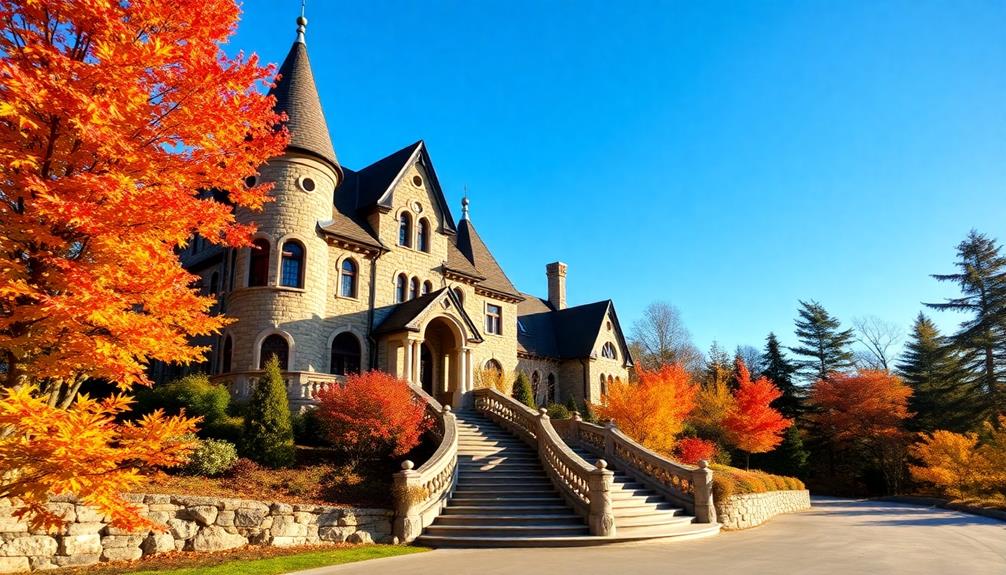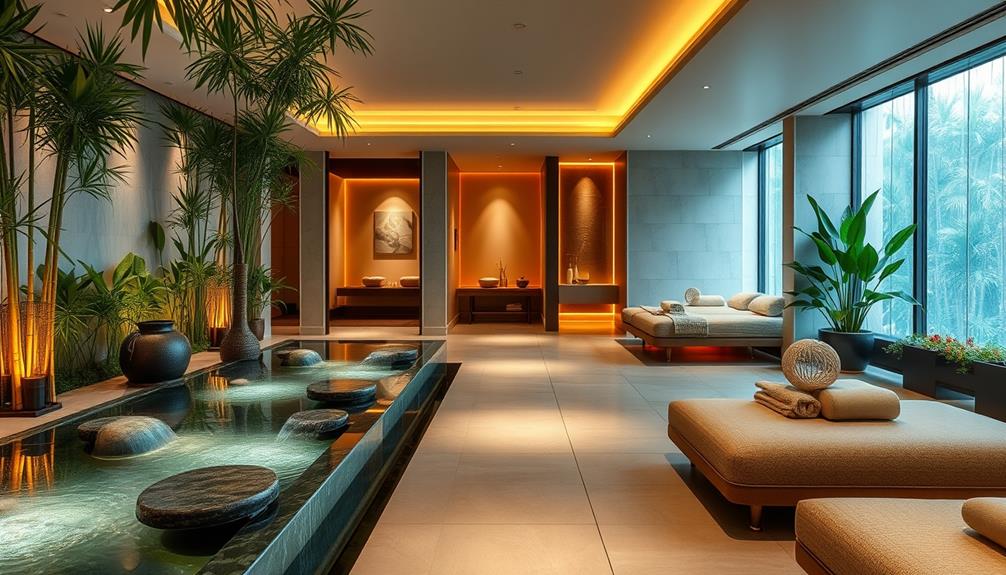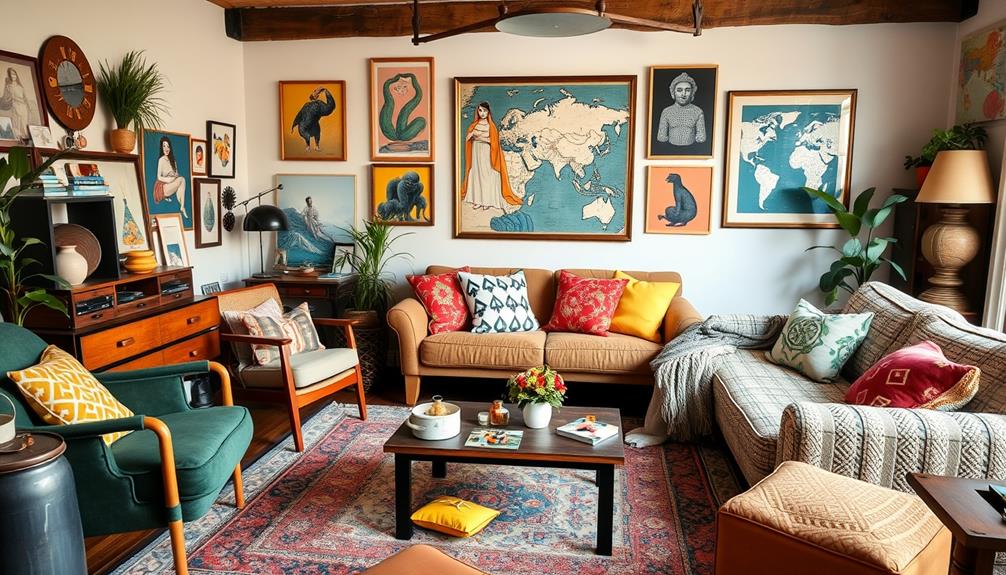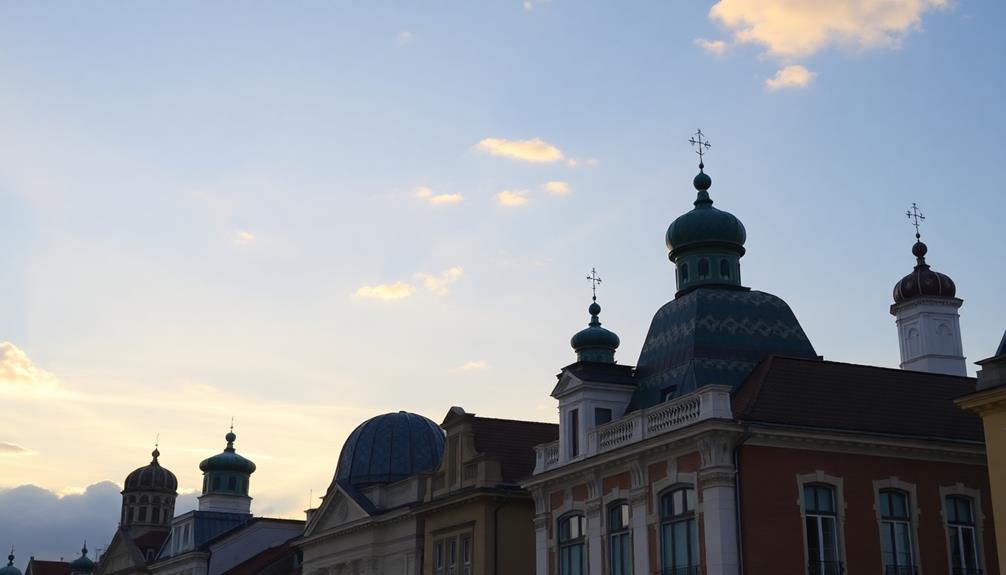Turreted homes are a delightful blend of whimsy and elegance, instantly grabbing your attention. They evoke feelings of nostalgia, reminiscent of fairy tales and grand Victorian mansions. With origins in medieval fortifications, turrets transformed from practical features into symbols of status and architectural beauty. You'll find them in various styles, from the intricate Victorian to the asymmetrical Queen Anne. Today, these charming structures not only enhance curb appeal but also provide cozy nooks and stunning views. If you're curious about their cultural significance and modern adaptations, there's so much more waiting to be uncovered.
Key Takeaways
- Turrets enhance architectural interest, adding verticality and charm to both historical and contemporary homes.
- They evoke nostalgic feelings, reminiscent of fairy tales and romantic designs.
- Originating from medieval fortifications, turrets symbolize strength, stability, and wealth in residential architecture.
- Modern turreted homes create cozy spaces, like reading nooks, while offering panoramic views and unique aesthetics.
- Turrets reflect personal style and adaptability, making them a sought-after feature in luxury builds.
Understanding Turrets
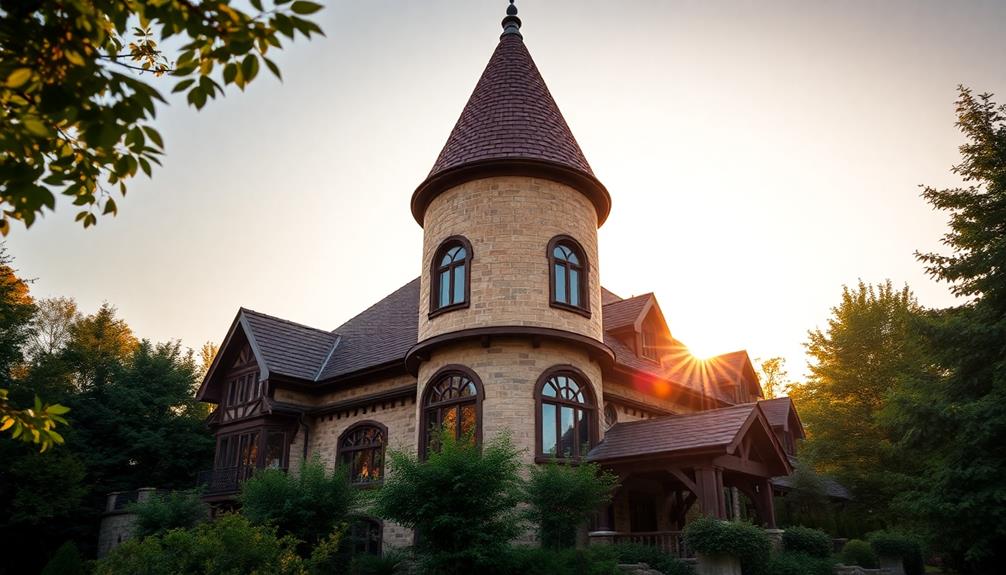
When you think of turrets, imagine those charming, cylindrical or polygonal structures that add a touch of whimsy and grandeur to a home.
Turrets serve both functional and decorative purposes, often enhancing the verticality and visual interest of a building. They can be beautifully complemented by modern farmhouse decor trends that emphasize natural materials and rustic aesthetics.
You'll find them in various architectural styles, particularly in Victorian homes, where they create distinctive silhouettes against the sky. These features can also evoke feelings of nostalgia, transporting you to fairy tale settings.
While traditionally linked to medieval and Gothic designs, turrets are adaptable elements that can fit modern homes, too.
Whether you're drawn to their historical roots or contemporary interpretations, turrets undeniably enrich the character of any structure, making them a beloved architectural feature.
Historical Context
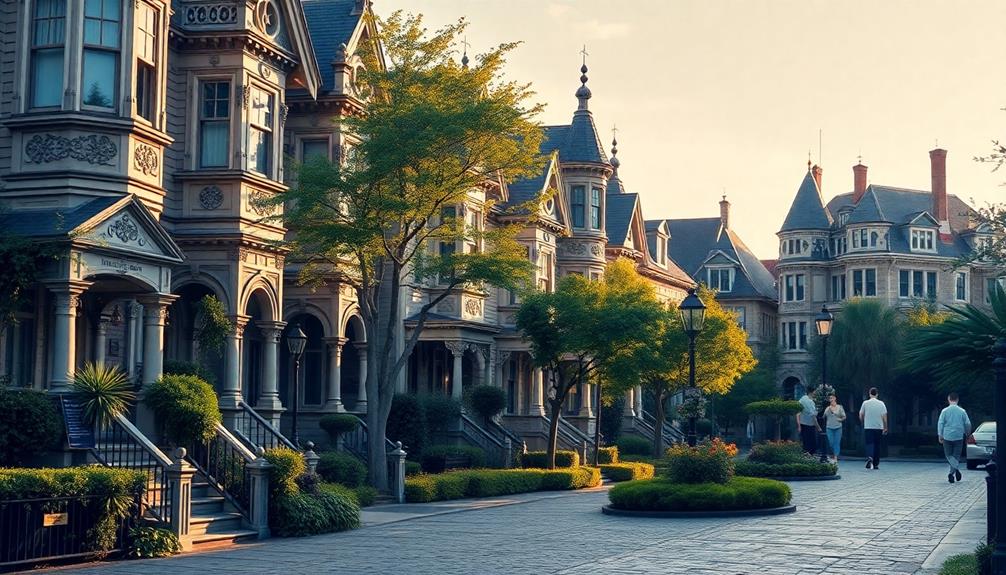
Turrets have a fascinating historical context, tracing their origins back to medieval fortifications designed for defense. Initially, they served as lookout points and protective structures. Over time, these practical elements transformed into decorative features, particularly during the Gothic Revival in the 19th century. You might find that they became symbols of status and wealth in residential designs, adding charm and character to homes.
Here's a quick overview of their evolution:
| Era | Purpose |
|---|---|
| Medieval | Defense and lookout |
| Gothic Revival | Ornamental features |
| Victorian | Status symbols |
| 19th Century | Architectural interest |
| Contemporary | Unique design elements |
Exploring this rich history helps you appreciate the beauty of turreted homes even more!
Architectural Styles
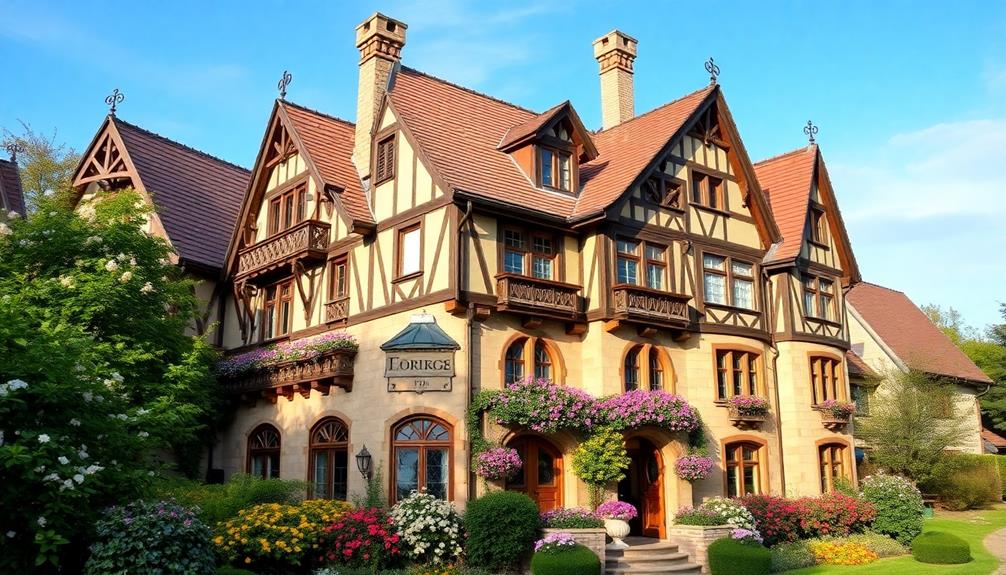
Many architectural styles feature turrets, showcasing their versatility and charm. In a world where design thinking principles can enhance creativity and problem-solving, turrets serve as a perfect example of how architectural elements can inspire innovative ideas in home design igniting creativity in a digital world.
You'll find turrets enriching the character of homes across various designs. Here are three popular styles that prominently showcase turrets:
- Victorian Homes: These often display elaborate turrets, adding intricate detail to their facades.
- Queen Anne Style: Known for its asymmetrical shapes, this style incorporates turrets that enhance visual interest.
- Gothic Revival: Characterized by pointed turrets, this style evokes a sense of history and grandeur.
Whether it's a cozy nook or an eye-catching focal point, turrets elevate the aesthetic of any home. Their presence not only defines the architectural style but also invites curiosity and admiration from all who pass by.
Cultural Importance
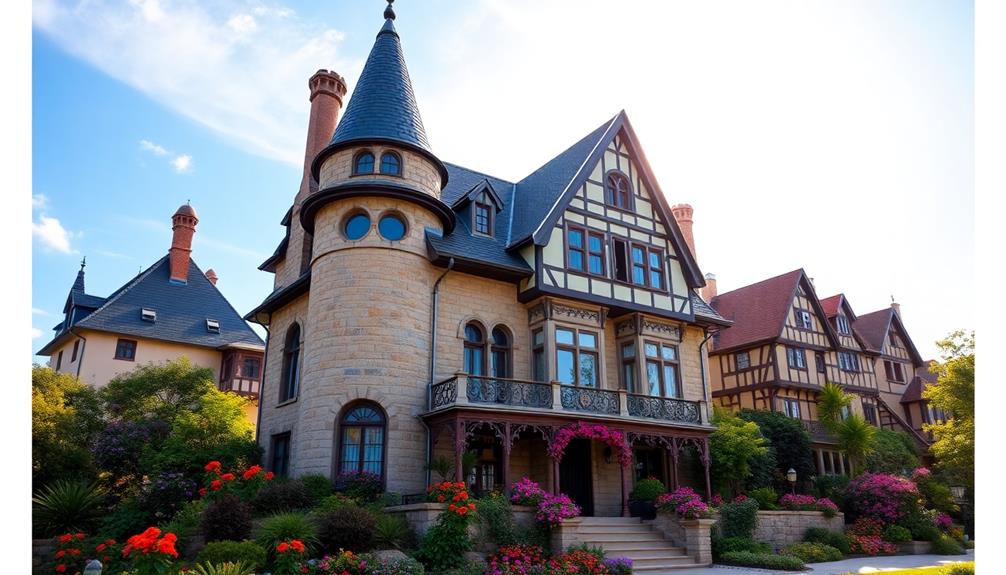
Embodying romance and nostalgia, turrets hold significant cultural importance in architecture. They evoke fairy tale imagery and carry a sense of grandeur. As you explore turreted homes, you'll notice how they symbolize strength, stability, and elegance.
Here's a quick look at their cultural significance:
| Aspect | Description | Example |
|---|---|---|
| Romanticism | Reflects a whimsical, enchanting style | Storybook cottages |
| Historical Roots | Originated from medieval fortifications | Castles and keeps |
| Symbol of Status | Represented wealth in residential designs | Victorian mansions |
| Architectural Diversity | Found in various styles and eras | Gothic Revival homes |
These elements make turreted homes not just structures, but narratives of culture and history.
Modern Uses
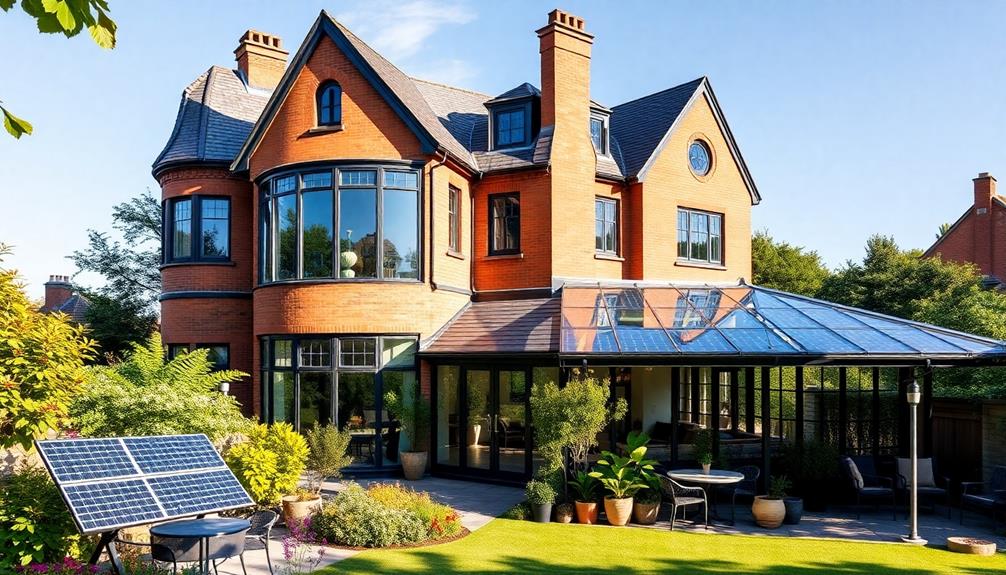
In contemporary architecture, turrets are making a comeback, often blending functionality with aesthetic appeal.
These charming features not only enhance the architectural style of a home but also reflect personal influences that shape individual design preferences, such as those found in exploration of personal tastes.
You'll find these features in modern homes, adding character and uniqueness to various designs.
Here are three popular modern uses for turrets:
- Reading Nooks: Turrets can create cozy spaces perfect for curling up with a book, offering both charm and comfort.
- Observation Points: With panoramic views, turreted rooms provide an ideal spot for enjoying your surroundings or entertaining guests.
- Luxury Enhancements: Homeowners often incorporate turrets in luxury builds to elevate curb appeal and showcase architectural diversity.
Frequently Asked Questions
How Do I Maintain a Turreted Home Effectively?
To maintain your turreted home effectively, regularly inspect the exterior for damage, clean gutters, and repaint as needed. Guarantee proper drainage, check for leaks, and consider professional help for intricate architectural features to preserve their charm.
Are Turreted Homes More Expensive to Build?
Turreted homes tend to be more expensive to build due to their intricate designs, specialized materials, and construction techniques. You'll invest in unique features and additional labor, but the resulting beauty often justifies the cost.
What Materials Are Commonly Used for Turrets?
When building turrets, you'll often find materials like brick, stone, wood, and stucco. These choices not only provide structural integrity but also enhance the aesthetic appeal, giving your home a unique character and charm.
Can Turrets Be Added to Existing Homes?
Yes, you can add turrets to existing homes! They enhance architectural appeal and create unique spaces. Consult an architect to guarantee structural integrity and design harmony, transforming your home into a standout masterpiece.
How Does Turret Design Affect Home Energy Efficiency?
Turret design can enhance energy efficiency by improving natural ventilation and daylighting. You'll notice reduced energy costs as turrets allow sunlight in and promote airflow, making your home more comfortable and eco-friendly.
Conclusion
To sum up, turreted homes stand like sentinels of history, blending elegance with timeless charm. Their unique architectural features not only capture the imagination but also invite you to dream of stories from the past. Whether you're drawn to their romantic allure or practical design, these homes continue to enchant both homeowners and architects alike. Embrace the magic of turreted living, and let your space reflect the character and nostalgia that these remarkable structures embody. Their distinctive silhouettes and storied past make them a perfect canvas for blending modern aesthetics with vintage touches. For those seeking inspiration, incorporating coastal boho home decor ideas can beautifully complement the timeless charm of turreted homes, adding a relaxed yet sophisticated vibe. Think airy textiles, nautical hues, and natural textures that seamlessly merge with the grandeur of these historic structures, creating a harmonious and inviting living space.
